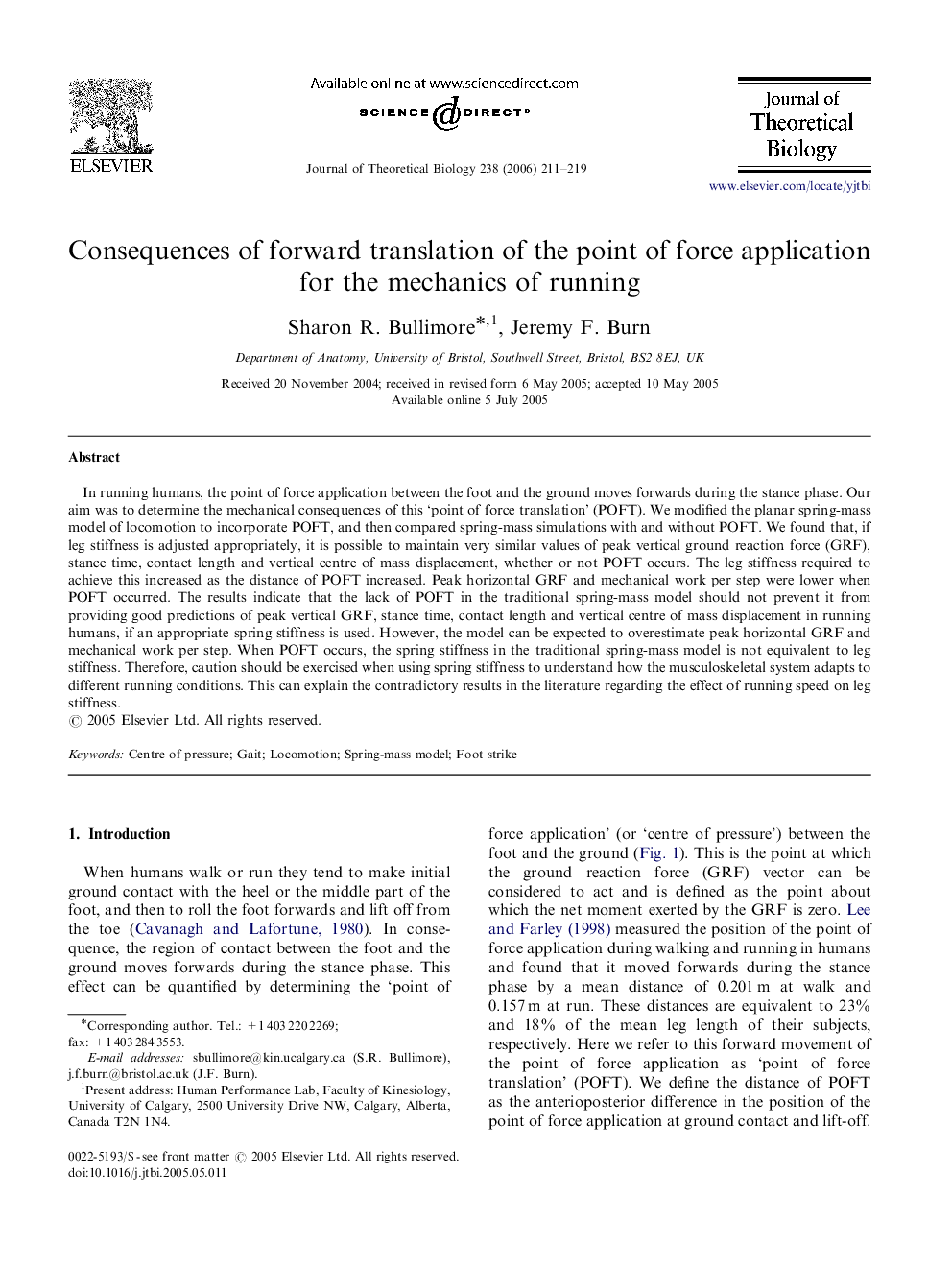| Article ID | Journal | Published Year | Pages | File Type |
|---|---|---|---|---|
| 4499789 | Journal of Theoretical Biology | 2006 | 9 Pages |
In running humans, the point of force application between the foot and the ground moves forwards during the stance phase. Our aim was to determine the mechanical consequences of this ‘point of force translation’ (POFT). We modified the planar spring-mass model of locomotion to incorporate POFT, and then compared spring-mass simulations with and without POFT. We found that, if leg stiffness is adjusted appropriately, it is possible to maintain very similar values of peak vertical ground reaction force (GRF), stance time, contact length and vertical centre of mass displacement, whether or not POFT occurs. The leg stiffness required to achieve this increased as the distance of POFT increased. Peak horizontal GRF and mechanical work per step were lower when POFT occurred. The results indicate that the lack of POFT in the traditional spring-mass model should not prevent it from providing good predictions of peak vertical GRF, stance time, contact length and vertical centre of mass displacement in running humans, if an appropriate spring stiffness is used. However, the model can be expected to overestimate peak horizontal GRF and mechanical work per step. When POFT occurs, the spring stiffness in the traditional spring-mass model is not equivalent to leg stiffness. Therefore, caution should be exercised when using spring stiffness to understand how the musculoskeletal system adapts to different running conditions. This can explain the contradictory results in the literature regarding the effect of running speed on leg stiffness.
